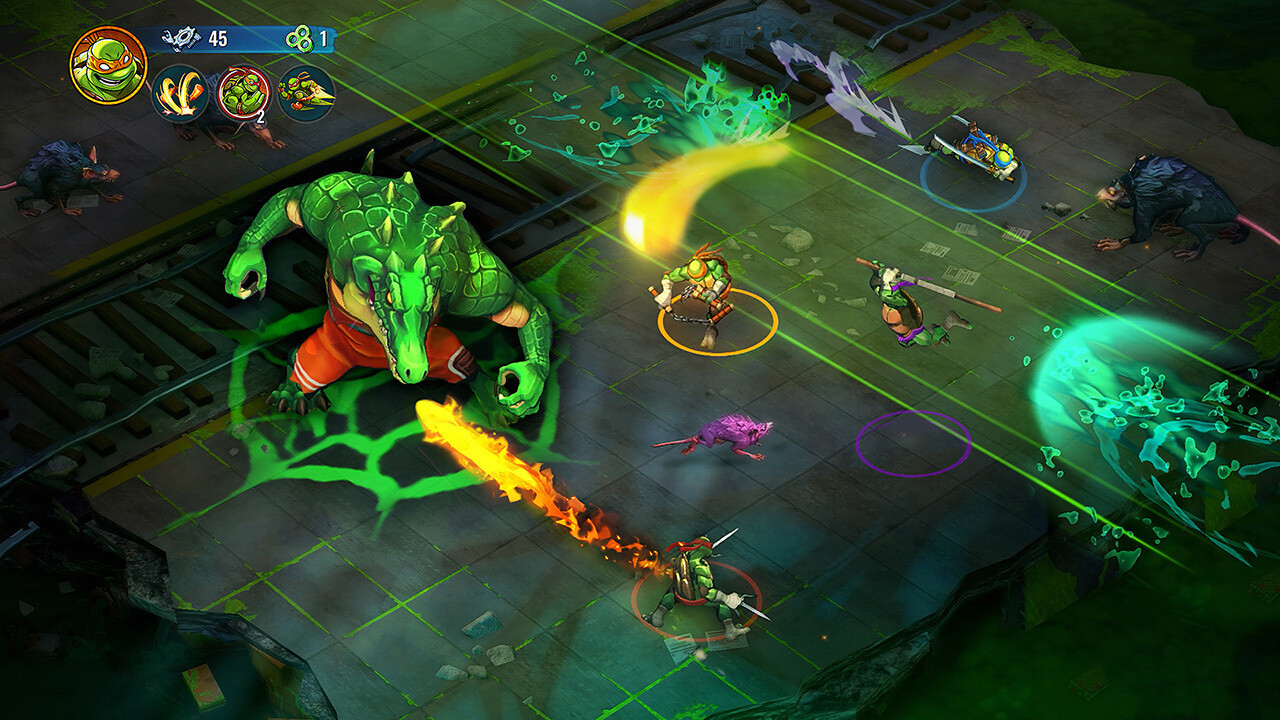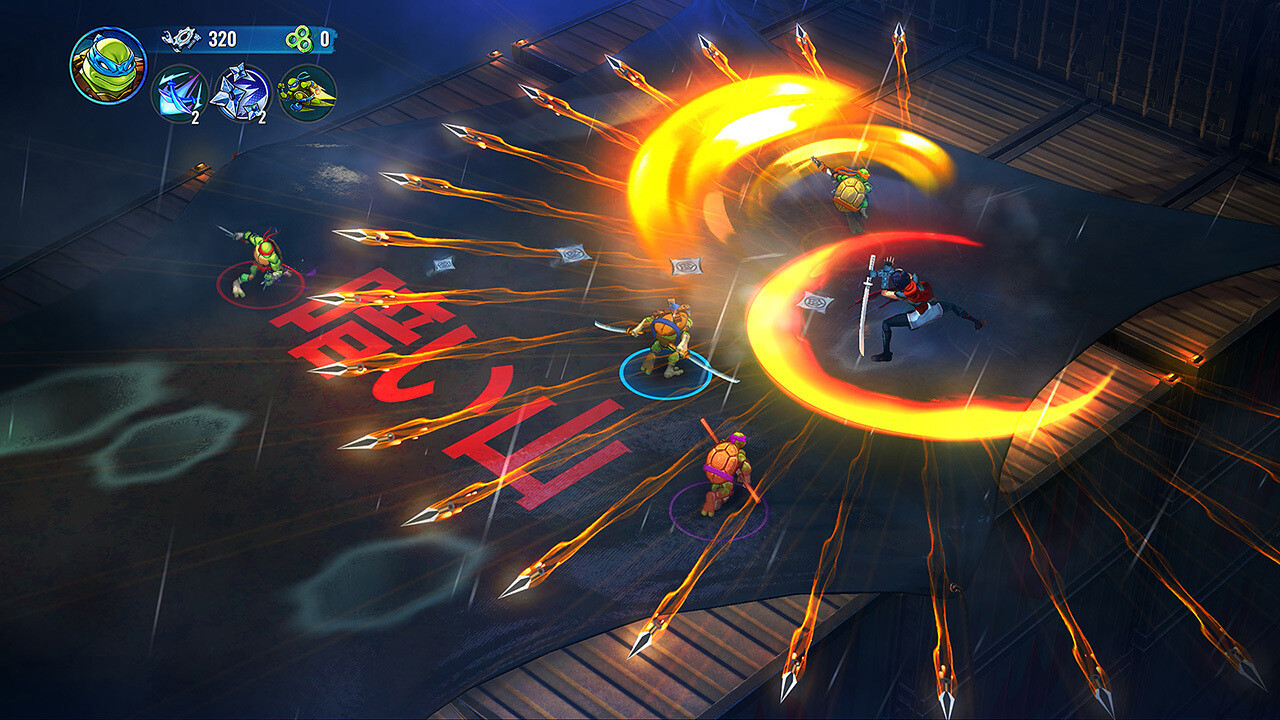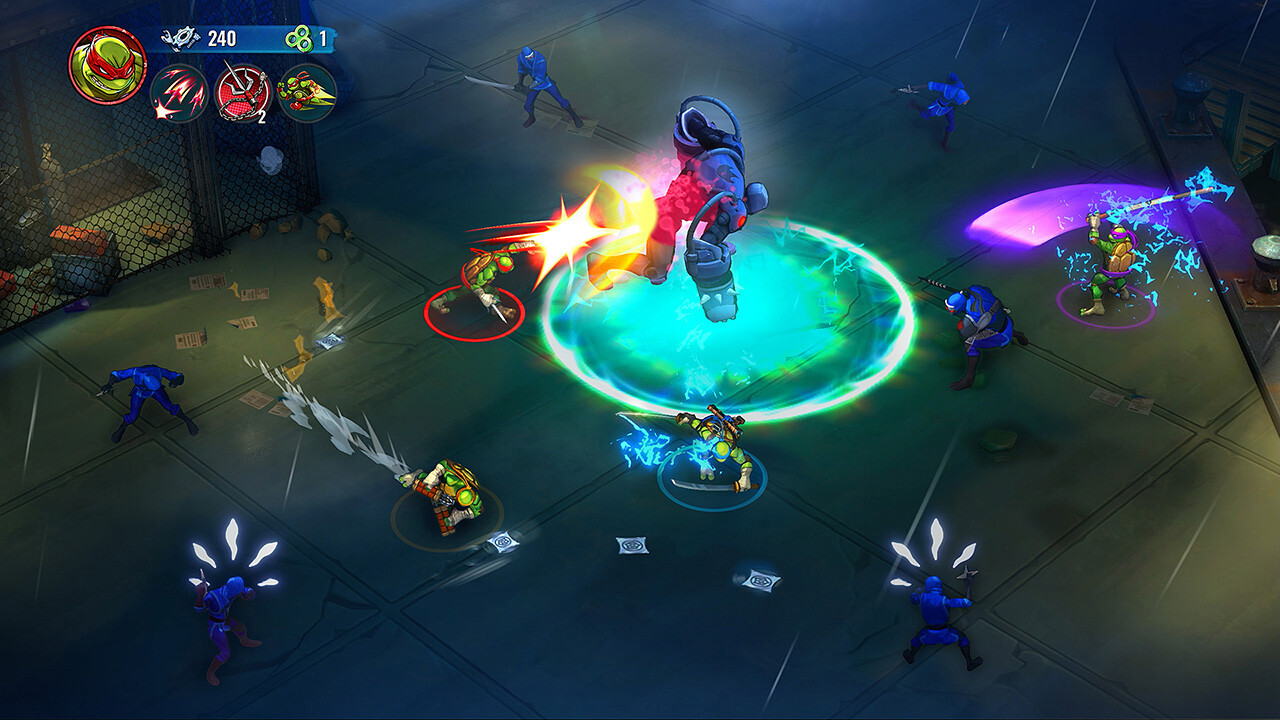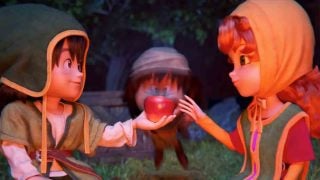The Teenage Mutant Ninja Turtles—you may have heard of them.
Not only are they an ’80s Saturday morning cartoon staple, but they’re also video game stars. And there is no video game genre that the Turtles are more lauded for than the beat-’em-up genre. Whether it’s in your local arcade or at home, you can experience Turtles In Time, The Manhattan Project, or the more recent Shredder’s Revenge and have a good time.
However, the Turtles occasionally find themselves in an ambitious mood, coming out of their shells into different styles of gaming. Cheesy ’90s concert tour notwithstanding, one such example is Apple Arcade’s Splintered Fate. Released exclusively on the mobile platform last year, developer Super Evil Megacorp took the TMNT boldly into the modern age of gaming and the roguelike genre. This is just one example of games on mobile platforms that would fit perfectly on Nintendo Switch, and it just so happens that Splintered Fate made the jump recently! The initial announcement was sandwiched between two additional Ninja Turtles games for the Switch, a port of the Raw Thrills side-scrolling arcade beat-’em-up Wrath of The Mutants, and the upcoming 3D action title Mutants Unleashed. So it’s safe to say that we aren’t hurting for TMNT content right now.
Regardless, that didn’t stop Turtles fans from keeping their eyes on Splintered Fate’s Switch release date. The Switch would surely be a bigger, better fit for the game and its genre. In fact, next to Steam, the Switch is probably the platform for roguelikes. And it brings me great joy to say that Splintered Fate is one of the best examples.
Splintered Fate’s greatest strength is that as a concept, it both slots in nicely with the Turtles’ beat-’em-up classics as well as modern action roguelikes like The Binding of Isaac and Hades. The game’s formula is as similarly pick-up-and-play as any Turtles gaming experience, but it demands a little more from the player than simply getting to Shredder and putting the game down. I’ve personally wanted more engagement out of a TMNT arcade-style game for a while now. Shredder’s Revenge tested the waters with its Dimension Shellshock DLC’s roguelike mechanics and repeat run-based progression. While it was enjoyable for a short while, that was exactly the issue; it didn’t leave me satisfied, and I ultimately put it down after a single weekend of play feeling like I had experienced the idea in its entirety.

That’s where Splintered Fate fares significantly better. It plays from an isometric above-ground perspective with similarities to, say, the Marvel Ultimate Alliance series or Diablo. The premise is easy to understand on the surface: you pick your choice of hero out of the four turtles and begin a run. The simple loop of clearing a room of enemies before moving on to the next one will appear familiar to anyone who has played Hades. The plot and exposition even progress with each game over, just like the aforementioned title. Here’s where TMNT brings in its own flavor though—four-player co-op. It’s this decision especially that reminds me of classics like Turtles In Time and the original TMNT arcade game. Blazing through scores of Foot Clan ninjas and Mousers with a room full of friends is just as brilliant as it’s ever been. A good deal of depth can be found in stacking upgradable elemental Turtle Powers that can be mixed and matched between the different turtles, multiple types of currencies to purchase modifiers, stat enhancers, and artifacts, which are more permanent upgrades such as a second chance after a single death. With that said, you’ve got more than enough reason to give Splintered Fate’s four areas a spin again and again.

Even better is that each member of the TMNT comes equipped with their own weapon, special attack, and personalized ability of sorts by default. Think of each Turtle as a different weapon in Hades. Leonardo, for instance, has dual swords with a good amount of range, shurikens for long-distance attacks, and decent speed. Raphael carries his signature sais and makes up for his lower range with more speed and a triple grapple chain that can pull enemies closer to him or him closer to bosses. Donatello’s bo staff has the best range of all the weapons, and his hardened shell ability gives him the best defensive capabilities as well. My personal favorite is Michelangelo, as his nunchucks are surprisingly potent in combat, his animations are bouncy, and he can taunt enemies to gain a temporary stat boost. Abilities can be changed out as well. I was quick to switch Michelangelo’s taunt for a meteor shower attack that ignited just about every enemy on screen.
No matter which Hero Turtle you pick, however, you will be met with an onslaught of enemies. I found that the standard amount of enemy spawns in Splintered Fate matched the aggressive timed challenge rooms in Hades, which is not something I was expecting. This game will challenge you sufficiently, even if you’ve played other roguelikes. What’s more is that the game actually doesn’t spawn a higher amount of enemies if you’re playing in co-op. Instead, it spawns an overwhelming amount of enemies in single-player and treats the co-op as your best line of defense against this. Because of this, it’s ideal to complete Splintered Fate with friends. Not only does each player get their own selectable upgrades, but the more players there are, the better chance you’ll have of seeing everything the game has to offer.

After you beat Shredder (come on, you already knew he was the final boss), the other bosses will become more difficult. Yes, it’s just like Hades, but Splintered Fate isn’t content with just turning the difficulty up. You’ll come across environmental obstacles too. Lightning storms, raining fire, and poisonous gas will make specific rooms on your later runs trickier than they were initially. The boss fights themselves are pretty fantastic as a result. The Karai fight in the ship harbor was definitely a highlight, especially on repeat runs where the entire screen became engulfed in flames. I found it hard to make it much further than this fight several times. The streets of New York that follow really crank the difficulty up. Each time you die, you’ll return to the sewers where you can change your turtle, equip permanent upgrades, and purchase modifiers using a combination of scrap from enemies, Dragon Coins, and Dream Coins. You’ll be eating what seems like New York’s entire supply of pizza to replenish health as frequently as possible in your runs, so it pays to increase your base health.
Perhaps the game’s greatest strength is its loyalty towards strengthening the IP. Splintered Fate’s story unfolds over the course of failed run after failed run, and even past several successful runs. You’ll be rewarded with new dialogue and some of the best character moments I’ve ever seen from any TMNT media. This tale of Master Splinter’s kidnapping brings out a vulnerable side to the four turtles that I never expected to see. IDW Comics’ take on the TMNT continues to impress and is in great form here. The character banter is a good deal more prominent here than in, say, Hades, but that’s due to the spotlight being shared between four protagonists rather than one. Even then, you’ll get different dialogue depending on which turtle you play as, which is a nice touch. It’s a small detail like this that ends up making a big difference. So much thought and care was put into this game’s portrayal of one of the most beloved franchises in animation history.

I have to admit the gritty, pseudo cel-shaded, and sometimes blurry visual style of Splintered Fate definitely had to grow on me. The game appropriately resembles taking place inside a comic book world. With that, you get a combination of defined, colorful vibrancy and muddy grit that you could only get from emulating the pages of a comic book. The style reminded me of Batman in the best way. Moreover, character models are small yet detailed enough that you can distinguish which Turtle you’re playing as. Attack animations and each turtle’s run are individualized and look fantastic, each hit landing with the kind of sound you’d make when imitating a movie scene to one of your coworkers. When playing in co-op, a colored circle appears below each player’s turtle, which helps set them apart even further. And trust me when I say this is necessary—this game is busy. Stages are covered in rats, ninjas, robots, and minibosses that have different colored attack cues. Rain, lightning, and toxic waste litter certain stages. The headers for each stage name even look like comic bubbles with the expected font too. And when a conversation is ongoing, it pops up in a dialogue box that looks straight out of a TMNT comic. That every line is also voice-acted is such a nice touch. What I could hear of the music fit the world and tone nicely, with just the proper amount of rockin’ tunes and brooding atmosphere. The music sat way lower in the mix than the voice work, but thankfully, you are in control of the volume level for it versus the voices and sound effects via the options menu.
With all of the visual craziness, it’s impressive that the game maintains a smooth 30 fps, rarely dropping frames. Splintered Fate plays most ideally in handheld mode but looked and played great in docked mode too. When additional players are added, the fast-moving combat doesn’t slow down whatsoever.
Leave a Comment
